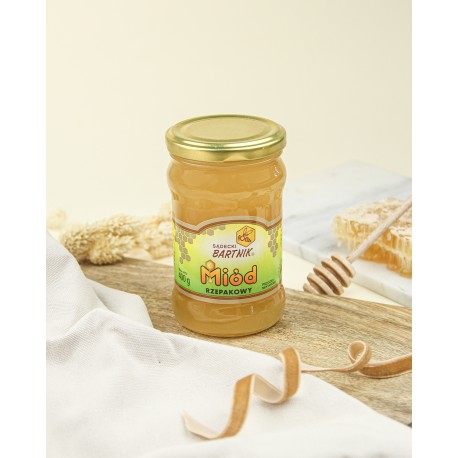Rapeseed honey - 400 g
It is made from nectar collected by bees from rapeseed flowers.
Cena: 16,00 zł
15040,
Dostępny
Rapeseed honey is colourless or straw-coloured when liquid and turns creamy white after crystallization. It crystallizes quickly due to its high glucose content and takes on a greasy consistence. The smell is weak, close to that of a rapeseed plant in flower.
Rapeseed honey is applied in:
- circulatory system diseases (sclerosis),
- in liver diseases,
- in inflammatory conditions of the upper respiratory tract,
- as well as in skin diseases.
It compensates for potassium deficiencies, lowers blood pressure, as well as counteracts sclerosis and improves oxygen and nutrient supplies to the cardiac muscle. When applied externally to burns, it prevents blister formation and related infections. It accelerates the development of granulation tissue and, as a consequence, the healing of wounds.








